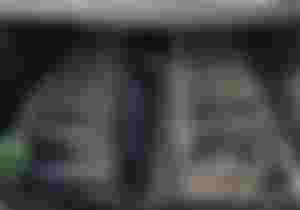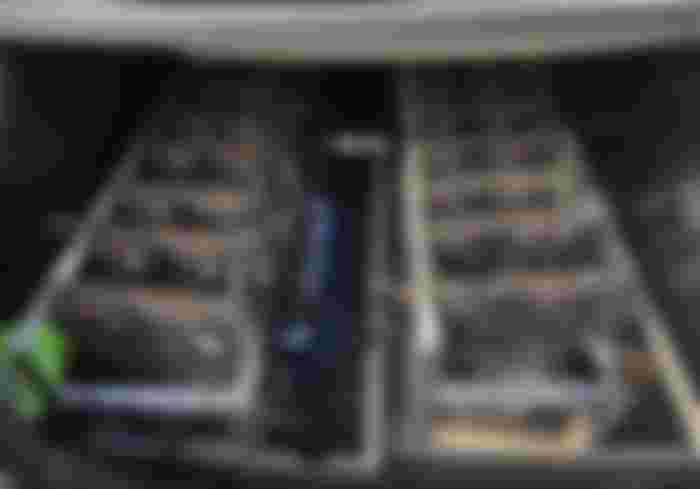
Hi there! This is the final article in the series where I share my experience with beginner miners. Last time we talked about farm maintenance; this time we’ll look at the final stage of any mining project, namely selling the rigs.
Time to Sell
The exact service life of video cards used for mining is impossible to predict, as there are too many variables. A lot depends on overclocking, cooling, and the manufacturer. In my experience, a great term for a mining project is three years. After three years the cooling system’s fans start going out of service far more often; you have to reapply the thermal paste, which is a labor-intensive task; PSUs start failing, and video cards become obsolete. So, it makes sense to sell the hardware and make some money while you still can. Here we’ve got two options: either sell the whole thing or its individual parts.
Selling Your Mining Farm
I prefer this option as it’s the easiest. No time wasted on taking the rig apart, much fewer meetings with buyers, fewer ads. Used miners are in steady demand on the market: some people conduct deep maintenance and continue using them for mining; some take them apart to put together gaming computers. In the latter case the buyer is likely to ask for component boxes, so preserved packaging may be one of your competitive advantages. Specifically, many ask for the motherboard backplate, which is generally removed when assembling a miner, but is preferable when putting together a desktop PC.

Don’t forget to wipe your hard drive clean of all personal data: make sure you’ve deleted the mining software configuration and all the settings of commercial Linux distributions. If you would like to maximize confidentiality, simple formatting won’t do, as it allows for easy data recovery. Only repeated data overwriting guarantees against the possibility of recovery, but that’s quite time-consuming.
To destroy your data, you can use free software called Secure Erase, which works well for both HDD and SSD.
Selling Miners by Parts
With this option, you’ll make a little more money by selling your rig part-by-part, but I don’t believe it’s worth the time and effort. Some of the components are not in demand on the secondary market, namely small data storage units, low-performance processors, risers, housings and PSU synchronizers. Besides, before you sell video cards to gamers you would need to restore the original VBIOS, otherwise they may have problems with games. Non-standard timings and decreased core voltage may cause games to fail or freeze. But for how long will the video card serve after long-term operation at full capacity?
Video Card Service Life
In fact, when used properly, a video card can serve for quite a long time, and it shouldn’t be a matter of concern. In my experience and statistically speaking, chips can easily survive three years of operation, which is a great term for a mining project. That doesn’t mean that in another year the gamer’s card will break down; quite the opposite, it is highly likely to work for many more years. The thing is, video cards usually break due to damaged chip soldering, not due to multiple memory writing cycles. Loss of contact between the chip and the video card board most often happens because of a sharp change in temperature, e.g., when mining is turned off and the temperature drops from 80 °C to 30 °C or a “heavy” game is launched, and, vice versa, the temperature, sharply increases. The manufacturer allows for thousands of such heat-cool cycles, and outages in mining are quite rare, so the video card is not subjected to anything critical. But the wear and tear of video adapters can gradually start showing.
Identifying Video Card Problems
What happens when something is wrong with the video card? The video card won’t just stop working out of the blue, which is why its wearing is sometimes hard to spot. In mining, problems more often occur with the cooling system and the memory, rather than with the chip. Whereas the cooling system is easy to maintain or replace, as we’ve already discussed in one of the previous articles, troubleshooting of the memory or the chip will likely cost more than the residual cost of the video card. Briefly, this kind of repair would consist in re-soldering of chips, which is a complicated process requiring special equipment and professional skills. That is why it’s better to monitor the wearing by tracking the number of errors in the mining process. If you mine on Hive OS, the number of errors will be displayed in red in the video card string. Errors are also displayed in the mining software logs.

If you see errors, don’t panic. First, their number has to be quite high to call for interference. If the number of errors is under ≈30–40 per day, or they do not affect mining considerably, just ignore them. If the number of errors gradually increases, turn down overclocking, e.g., decrease memory frequency from 2,100 to 2,050 MHz. In most cases that should do for quite some time.
Such minor problems indicate memory wearing, but that doesn’t mean the video card is no good for games. All you need to do is restore the original VBIOS and run a couple of tests (e.g., 3DMark benchmark). If no artifacts i.e. vertical lines or squares are displayed, then gamers are likely to be able to use the card for a few more years.
Hardware Depreciation
Over time computer hardware prices tend to steadily go down. After new video card prices had increased several-fold due to the mining boom of 2017–2018, hardware depreciation became even more notable. If you buy a miner when the demand is at its peak, in three or four years you will be able to sell it for approximately ⅕ of the initial cost. For instance, rigs based on seven RX 470 4 Gb video cards had cost about 3000$ in 2017, and three years later they sold well for 500–600$. Such depreciation is nothing to be afraid of, as over this time the miner is likely to pay for itself multiple times.
The demand, and therefore the price, is highly dependent on the situation on the crypto market. I noticed that the number of ads selling miners and inquiries from buyers increases considerably when the Bitcoin rate goes up. The lowest demand was seen when the Bitcoin rate plummeted to 3,400$, so there’s a direct correlation between hardware prices and interest in crypto currencies. When the Bitcoin rate was growing in November 2020, even rigs with 4 GB video cards sold well, and buyers were happy to get a few of them to make money mining Ethereum and then sell the video cards to gamers to start mining another currency.
⌘⌘⌘
This is the end of the series of articles for beginner miners. We’ve covered the whole journey from choosing and buying a miner to selling it. This is quite an exhaustive manual, and some information may be going out of date as you read, — which is why I suggest you sign up to our blog to stay tuned.
Thank you!



Thats good accumulation like mining🙂